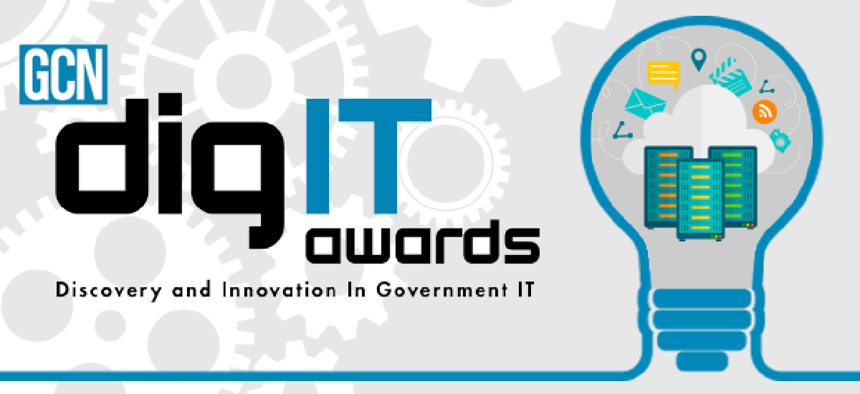Announcing the Dig IT Award finalists: Cloud and infrastructure


Connecting state and local government leaders
Six infrastructure projects show what IT innovation can make possible in the public sector.
There are great examples of discovery and innovation in government IT, and GCN's Dig IT Awards look to spotlight and celebrate them. Today we are pleased to announce the finalists in our second category: Cloud and Infrastructure.
The projects below, along with the finalists in five other categories, will be profiled in the coming weeks in GCN and on GCN.com and honored in person at the GCN Dig IT Awards Gala on Oct. 13 at the Ritz Carlton in Tysons Corner, Va. The overall winner in each category, as selected by our judging panel of top government IT innovators, will be announced at the Oct. 13 gala.
The finalists for Big Data, Analytics and Visualization were published on Aug. 18, and the top projects in other categories will be announced over the next several days. Today, however, GCN's congratulations are focused on the six Dig IT Award finalists for Cloud and Infrastructure:
Regional Emergency Number System Deployment
Ark-Tex Council of Governments
It's a fundamental risk for 911 systems: A disaster that prompts a surge in emergency service calls can disrupt the 911 network itself, just when it's needed most. The Ark-Tex Council of Governments, a consortium of 10 counties in northeast Texas and southwest Arkansas, has built critical resiliency into its regional 911 network by incorporating satellite broadband technology as a backup communications path that seamlessly steps in if the terrestrial network goes down.
Analytics and Data Sharing Platform to Track Disease Transmission
Centers for Disease Control and Prevention
As the Zika virus has so clearly shown this summer, an infectious disease can spread rapidly and involve a baffling array of vectors. Data science can accelerate the effort to understand and then contain an outbreak, but only if the proper tools are in place. The CDC built out just such a toolkit to make sense of a surprising surge in both HIV and hepatitis in rural Indiana. The cloud-based platform puts powerful data-science tools directly in the hands of CDC subject matter experts, allowing them to combine disparate datasets and distill insights in days that might otherwise have required months.
IT Consolidation and Enterprise Architecture
Louisiana Department of Health
Louisiana Office of Technology Services
Like many agencies, Louisiana's state government, and its Department of Health in particular, faced a familiar challenge: How to replace siloed legacy systems in a way that meets modern standards, allows for shared services and encourages interagency collaboration. Unlike most, Louisiana was able to tackle the project in a holistic, enterprisewide transformation. The resulting on-premises, software-defined data center solution has centralized vital resource pools, improved cost allocation, ensured federal compliance for Department of Health systems and produced tens of millions in annual savings.
myServices
Department of State
After years of unsuccessful attempts to replace the eServices workflow system, State Department officials in mid-2014 decided that a cloud-based platform was the best way to meet the service management needs of 285 overseas posts. The pilot deployment for myServices was spun up in just eight weeks, and the global rollout began in February 2016. The platform now enables diplomats, their family members and other government agency employees to request more than 135 services. While not yet fully deployed, myServices already has reduced support costs, enhanced security and created a road map for other cloud-based, continuous-development initiatives at the agency.
Online Public Inspection Files
Federal Communications Commission
It's difficult to deliver on open government when "public files" are kept on paper. So the FCC has developed a commercial cloud-based repository for political ad buy disclosures, joint sales agreements, donor lists for noncommercial channels and other data on broadcasters that is to be publicly available. By building out a fully responsive, Section 508-compliant and API-driven system, the agency has gone from meeting the letter of the law to embracing the spirit of public access in the digital age.
Workforce Integrated Performance System
Department of Labor
WIPS is required to deliver on the Workforce Innovation and Opportunity Act -- a law that passed in July 2014 and called for implementation this summer. And even though authoritative guidance on the technical and business needs was not finalized until May 2016, the agency has used agile development and commercial cloud services to deliver a FedRAMP-compliant, user-experience-driven enterprise system at a speed rarely seen in government.




